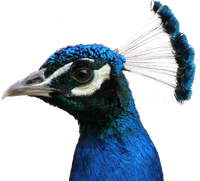m (WELL $&*#*@*@....) |
mNo edit summary |
||
| Line 1: | Line 1: | ||
| + | {{speciesbox |
||
| − | {{automatic Taxobox |
||
| name = Greater Rhea |
| name = Greater Rhea |
||
| image = Greater Rhea.png |
| image = Greater Rhea.png |
||
Latest revision as of 01:28, 13 March 2018
| Greater Rhea | |
|---|---|

| |
| Scientific classification | |
| Kingdom: | Animalia |
| Phylum: | Chordata |
| Class: | Aves |
| Infraclass: | Palaeognathae |
| Clade: | Notopalaeognathae |
| Superorder: | Rheimorphae |
| Order: | Rheiformes |
| Family: | Rheidae |
| Genus: | Rhea |
| Species: | R. americana |
| Binomial name | |
| Rhea americana (Linnaeus, 1758)[2] | |
| Subspecies | |
|
R. americana americana (Linnaeus, 1758)[2] | |

| |
| Distribution of subspecies | |
The Greater Rhea, Rhea americana, is a flightless bird found in eastern South America. One of two species in the genus Rhea, in the family Rheidae, the Greater Rhea is endemic to Argentina, Bolivia, Brazil, Paraguay, and Uruguay.
Other names
"Ostrich of South America".[3] Other names for the Greater Rhea include the Grey, Common, American Rhea, ñandú (Guaraní) or ema (Portuguese).
Description
Greater Rhea is huge, and hefty ratite that's 1.70 m (5.6 ft) tall, with pale irides, base of neck and sides are blackish,[4] grey to brown and white in colour, which helps it to camouflage it.[3] Huge wings with long floppy feathers covering body.[4]
Like other ratites (large flightless birds), there is little difference between the sexes, except the male has a dark collar in the breeding season.[3] The juvenile has more grey in its plumage and is marked with dark stripes that disappear about six months after hatching.[3]
Similar species
The Lesser Rhea is shorter.[3]
Behaviour
Diet
Calls
Reproduction
Distribution/habitat
References
- ^ Template:IUCN2011.1
- ^ a b c d e f Blake, Emmet Reid (1977). Manual of Neotropical Birds: Spheniscidae (penguins) to Laridae (gulls and allies). University of Chicago Press. pp. 8–9. ISBN 0-226-05641-4.
- ^ a b c d e Frances, Peter; et al. (2007). Bird: The Definitive Visual Guide. Dorling Kindersley Inc. ISBN 1564582957.
- ^ a b Erize, Francisco; Mata, Jorge R. Rodriguez; Rumboli, Maurice (2006). A Field Guide to the Birds of South America Non-Passerines. Harper Collins Publishers Ltd. ISBN 9780007150847.
Further reading
| Wikimedia Commons has media related to: http://commons.wikimedia.org/wiki/Category:Rhea_americana |
- Accordi, Iury Almeida; Barcellos, André (June 2006). "Composição da avifauna em oito áreas úmidas da Bacia Hidrográfi ca do Lago Guaíba, Rio Grande do Sul" [Bird composition and conservation in eight wetlands of the hidrographic basin of Guaíba lake, State of Rio Grande do Sul, Brazil] (PDF) (in Portuguese). Sociedade Brasileira de Ornitologia. Archived from the original (PDF) on 2008-12-19.
- Tinoco, Penha; Young, Robert Young (June 2006). "The fishing rhea: a new food item in the diet of wild greater rheas" (PDF). Sociedade Brasileira de Ornitologia. Archived from the original (PDF) on 2008-12-19.
- Schuh, Hans (March 20, 2003). "Alleinerziehender Asylant" [Single-parent families seeking asylum]. Die Zeit (in German). Retrieved July 22, 2011.
External links
- Rhea videos, photos and sounds on the Internet Bird Collection
- Template:ARKive
| Projects | ||||
|---|---|---|---|---|
| ||||



